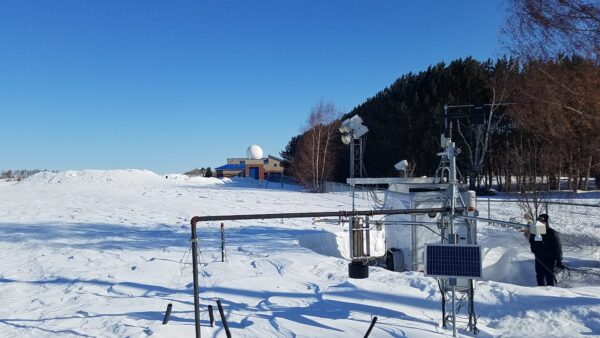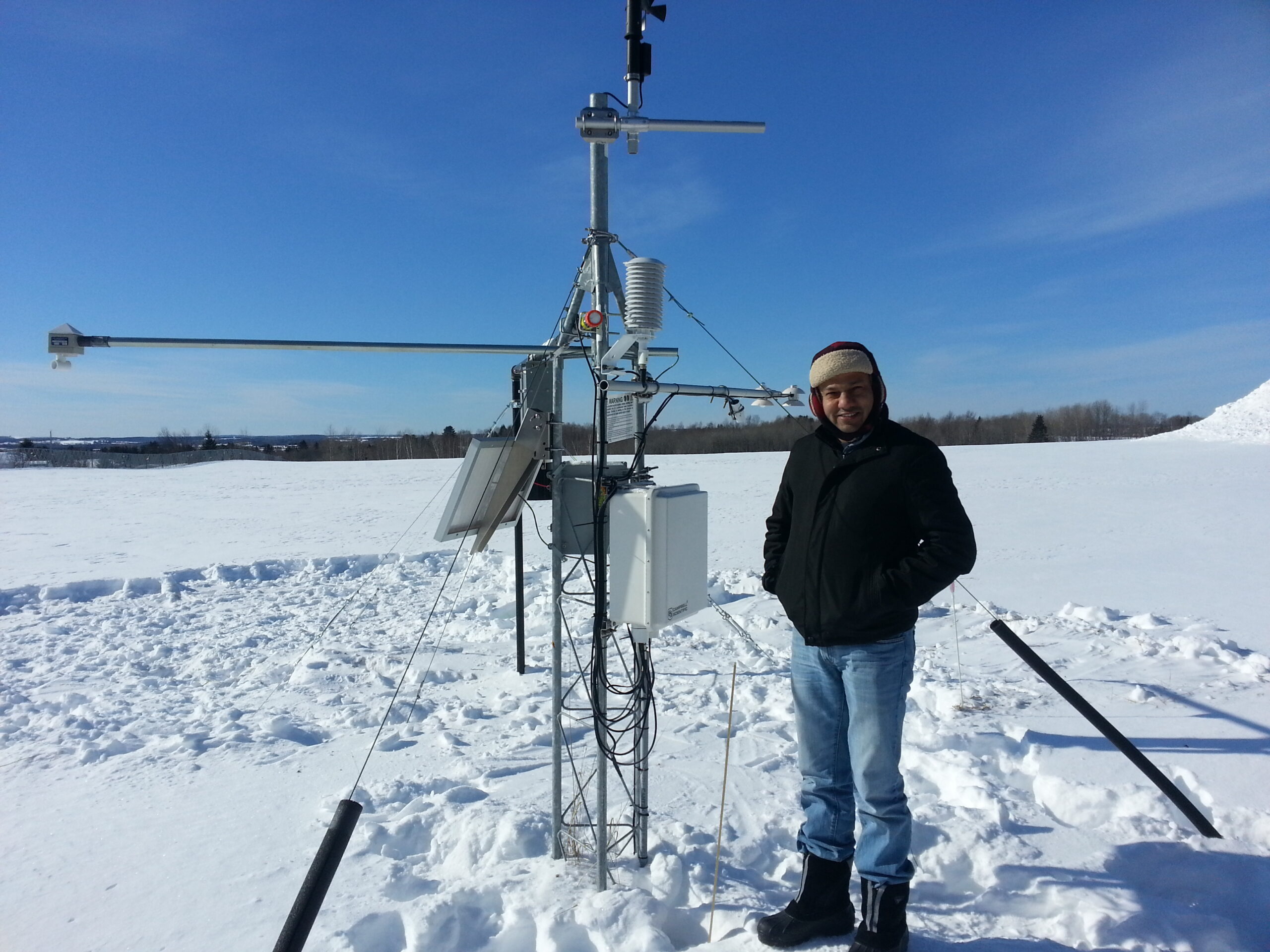Snow Remote Sensing
Dr. Tarendra Lakhankar has led the CUNY Snow Analysis and Field Experiment (CUNY-SAFE) at Caribou Municipal Airport, ME, since 2010. This location, with a humid continental climate and an
average snowfall of 116 inches, is perfect for studying snow. The experiment, equipped with advanced sensors and cameras, gathers extensive weather, radiation, and microwave emissions data. The research focuses on understanding microwave interactions with snow, aiming to enhance snow cover and water equivalent estimation techniques and develop methods for assessing snow depth and moisture using microwave radiometry. It also explores how snow moisture affects microwave emissions, involving different snowpack stages and remote sensing models like SNTHERM. The project contributes to satellite-based snow property retrieval methods, field training for students, and testing innovative instruments, enhancing knowledge of snow properties and their environmental impact. It’s notably supported by four doctoral students’ work installing equipment and data for snow modeling, leading to international journal publications, and training several master’s and undergraduate students, advancing academic and practical experience in snow research. https://crest.cuny.edu/snow/

- Basic Snow Research (Link Hydrology and Earth System Sciences Paper)
– Field Experiments using Microwave Radiometers (37- 89 GHz) – Preliminary Analysis
– Algorithm Development for Snow Water Equivalent using Remote Sensing Data
– Synergistic Use of Remote Sensing for Snow Cover and Water Equivalent Estimation - Applied Snow Research
– Remote Sensing and Weather Forcing Analysis for Streamflow Simulation
– Remote Sensing based Snow estimates for Hydro-logical Models Applications - Calibration and Validation of snow products
– Validation of NOAA Interactive Snow Maps with National Climatic Data Center - Graduated Students: Jessica Chiu (BS), Christine Chen (MS), Hiram Sanchez (MS),
Jose Infante Corona (PhD), Carlos Perez (PhD) and Jonathan Munoz (PhD)













